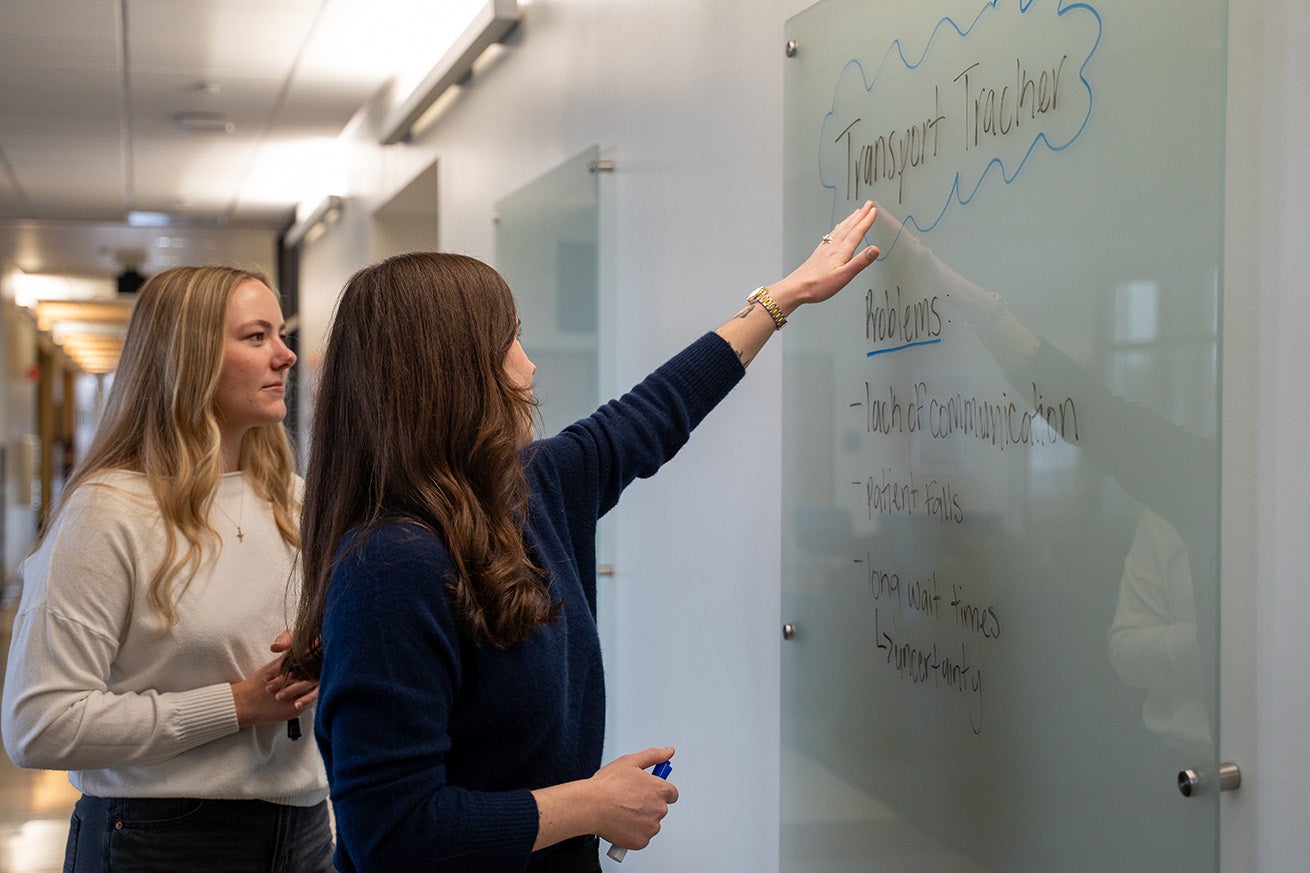
Nurses may not come to mind when one thinks of “innovators”, but with a new undergraduate nursing course at Boise State, that might change.
Senior nursing students Erin Miller and Aja Wilson are building the future of healthcare with an idea born in their innovations class.
In the simplest terms, they’ve designed a new medical technology that improves staff communication and patient safety. Even though it started as a class project, they’ve already won two pitch competitions with their idea; the more positive feedback they received, the more they figured they should keep going with it.
“We really had nothing to lose,” Wilson said.
Since finishing the innovations course last fall, Miller and Wilson have interviewed hospital staff and sought out those with expertise in patents and coding. Their goal is to create a product that could be integrated into hospitals here in Treasure Valley and, hopefully, expanded to the nation.
“I honestly did not expect students to want to continue their project, just because it’s a heavy course load and they have so much other work,” said Sarah Llewellyn, associate professor and innovations course co-instructor. “It’s really great that they saw the value in their idea and were willing to put in the effort to take it forward.”
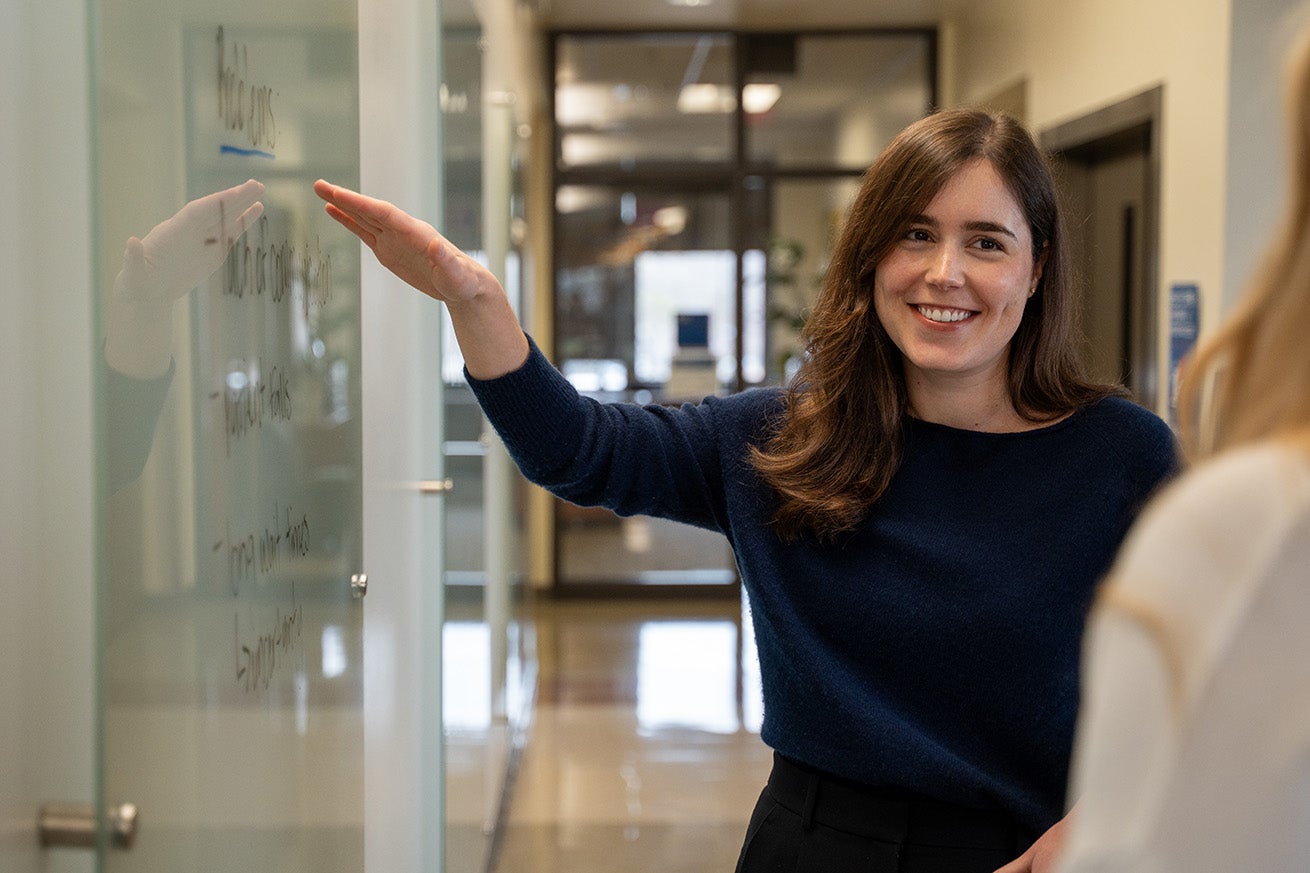
The innovations course is helping shape students’ perspectives on all that nurses can accomplish.
“There’s nobody better than those that are interacting with patients directly and experiencing the problems and lack of innovations within healthcare…to actually make a difference,” Wilson said.
But many nurses don’t know what the next steps are to put their “ideas into motion,” Wilson said, so she and Miller consider the course, and their project specifically, “a really good learning experience.”
“Because whether or not this innovation works out in our future healthcare careers, if we come into contact with somebody who has a great idea, now we know how to help them,” Wilson said.
‘Oddball course’ offering big outcomes
The healthcare innovations class is part of the new undergraduate pre-license program curriculum. Llewellyn and her co-instructor, Clinical Assistant Professor Edy Zepeda, designed it to empower students – through the framework of design thinking – to use creativity to solve problems.
“You talk about innovation, and you’re like, ‘Okay, we’re gonna be making something,’” Wilson said. “But I don’t think we really grasped the whole idea of it until we were actually in the course.”
“It was definitely a bit of an oddball course, just hearing the name,” said Miller. “I tried to keep an open mind, and very quickly found that I enjoyed using a different part of my brain.”
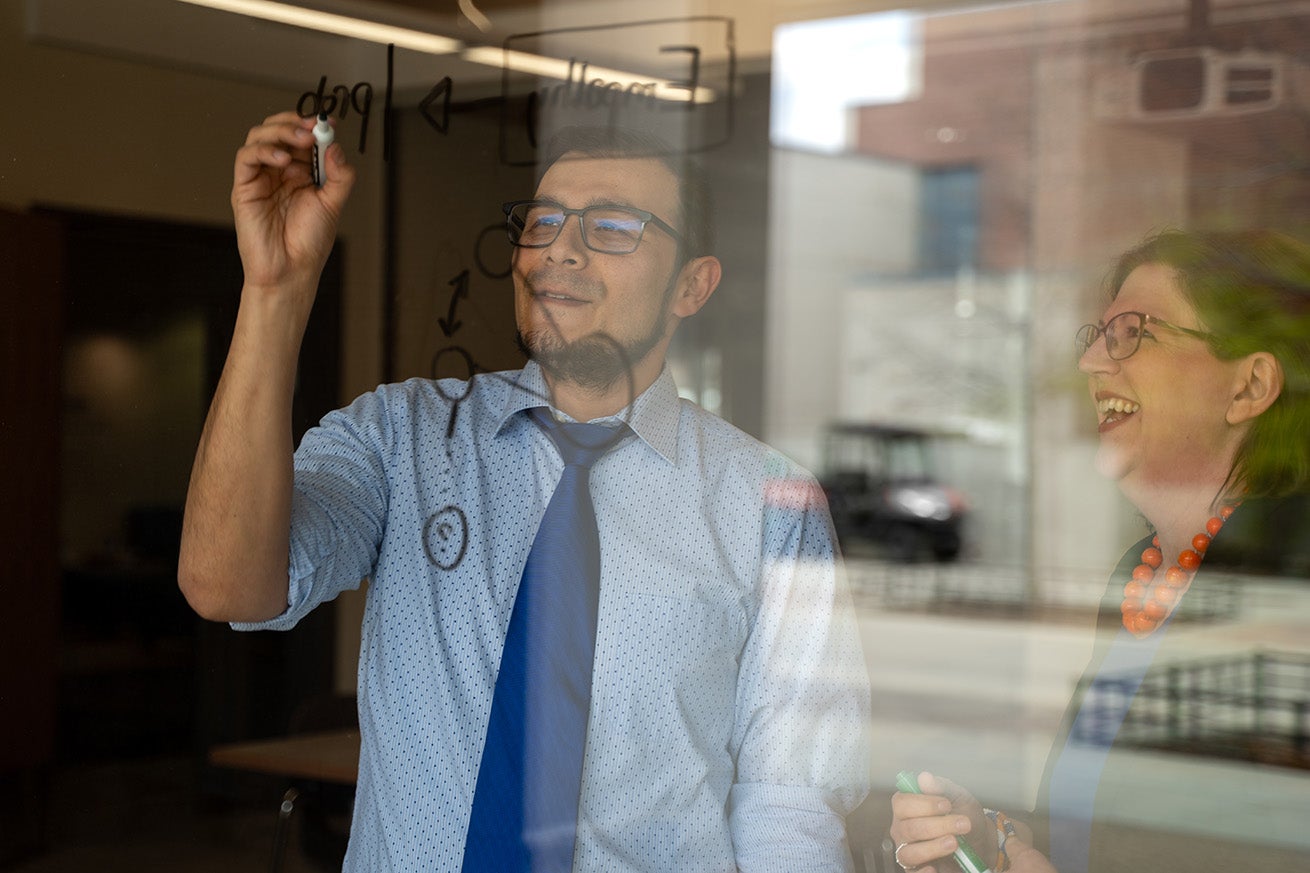
“Nurses by nature want every single problem to go away,” Zepeda said. “We look for problems, try to solve them, and watch their effectiveness. So this class was a natural fit for students.”
Miller and Wilson particularly appreciated the time set aside for brainstorming together as a class.
“Our minds are just so full of things all the time that it was nice to have a designated time where you went in, you sat down, and it was a free-for-all of ideas,” Miller said.
Wilson appreciated all the opportunities her classmates identified as areas they could “make life easier for the nurses, the patients, and all the healthcare staff involved.”
Rather than being stuck in the problem – “which I think a lot of times healthcare staff are,” Wilson said – the course empowers students to propose new solutions.
Pitching problem-solving projects
Students initially walk through the design thinking framework together as a whole class. But they spend the majority of the semester applying it to a project of their own. Projects can be anything from a new product to a staffing matrix or training program.
“It doesn’t have to be super ‘out there’ to be innovative,” Llewellyn said. “It can be whatever they’re interested in.”
“The goal is to spark that innovation, and see what nursing innovation can look like,” Llewellyn said.
“The most rewarding part of this class is seeing the growth by the students as the semester progresses,” Zepeda said. “Many students mention week one they don’t believe they are creative or problem solvers. Many students announce halfway through the semester how excited they are to know they are in fact very creative and can solve problems.”
For their projects, students identify a problem, propose solutions and practice pitching these solutions to their peers – five times over. Although repetitive, this process helps students refine their innovations and learn to give effective feedback in a way that will be well-received.
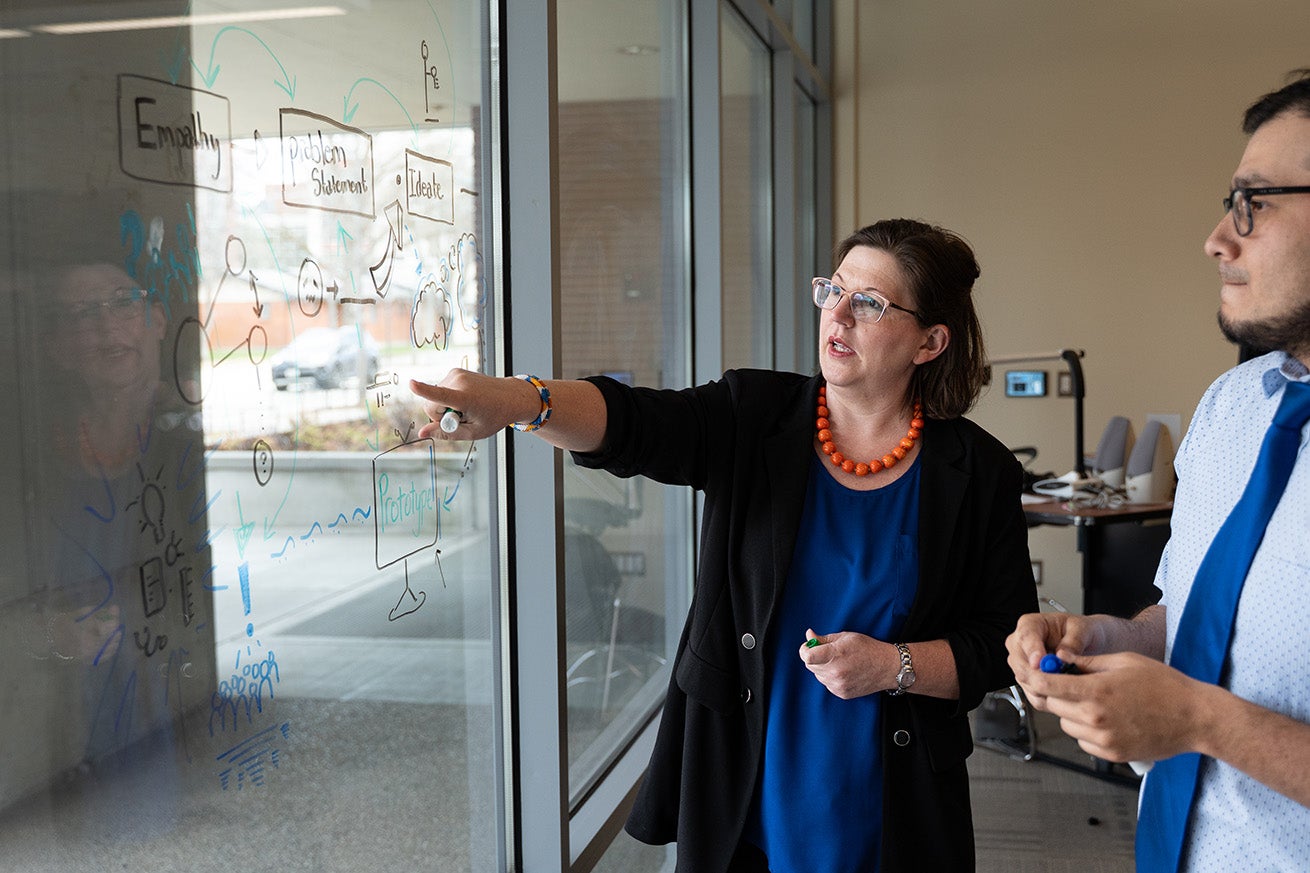
“For people to listen to you, you have to have a well thought out answer,” Llewellyn said. “[Students are] all going to be prepped to be able to give those answers because they’re going to be giving each other feedback multiple times.”
This process also helps students refine their pitches for the pitch competition at the end of the class, which includes a cash prize from the Venture College. Llewellyn and Zepeda invite faculty and staff from the School of Nursing and the Venture College to serve as judges.
Llewellyn is proud of students who pitched in the fall, noting that representatives from the Venture College were impressed.
“They said any of them could have won it based on how well they pitched,” she said. This semester’s competition will be held in early May.
Their advice? Build relationships
After winning their class pitch competition in the fall, Miller and Wilson jumped at the opportunity to learn from the Venture College Incubator, a free 10-week course helping students launch their business ideas. Since then, they’ve only discovered more open doors.
They’ve connected with individuals working in local hospitals across the Treasure Valley who are enthusiastic about their pitch. They also won the 2025 Student Innovator Initiative, which connected them with other healthcare innovators, and most recently they advanced to the semi-finals of the Idaho Entrepreneurship Challenge.
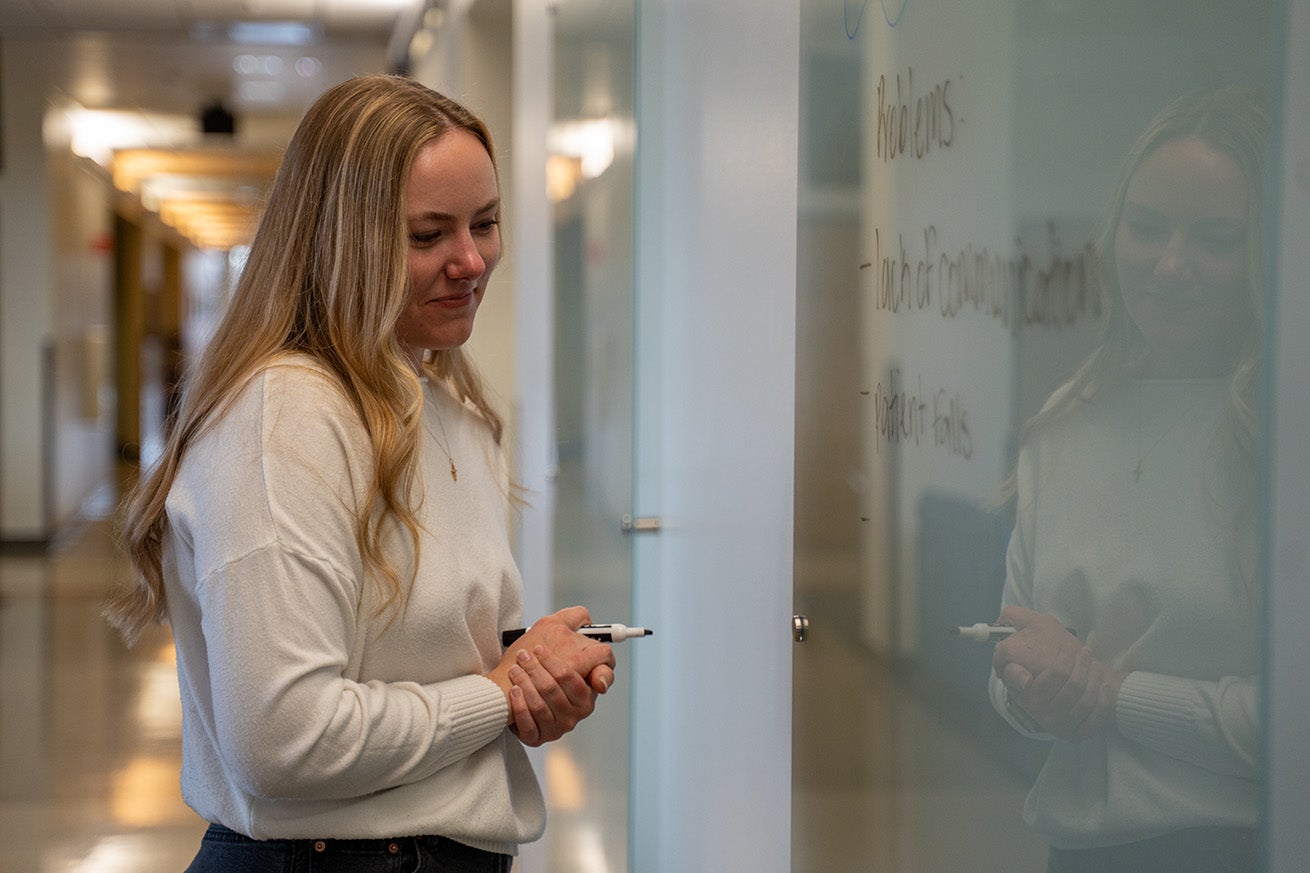
Miller said partnering with Wilson “has been paramount” to making it this far with their idea. “It would be nearly impossible to do this alone,” she said.
Wilson agreed. “Figuring out how to make connections, figuring out how to run a business plan, anybody can do that,” she said. “But you need somebody there to support you that knows exactly what you’re going through.”
Their advice for student innovators?
“You’re going to have to rely on other people’s connections and kindness and knowledge,” Miller said. “You’re not going to know everything; you just can’t. So just be open to building those relationships.”
Design thinking in nursing
Design thinking walks innovators through a process of identifying a problem, thinking through relevant solutions and their feasibility, trying out a solution and then repeating steps as necessary.
This may sound unrelated to nursing, but design thinking isn’t all that different from frameworks students already learn.
Llewellyn described a series of similar “iterative processes” built into the nursing curriculum that help students “identify solutions” by adjusting to the reality of the situation.
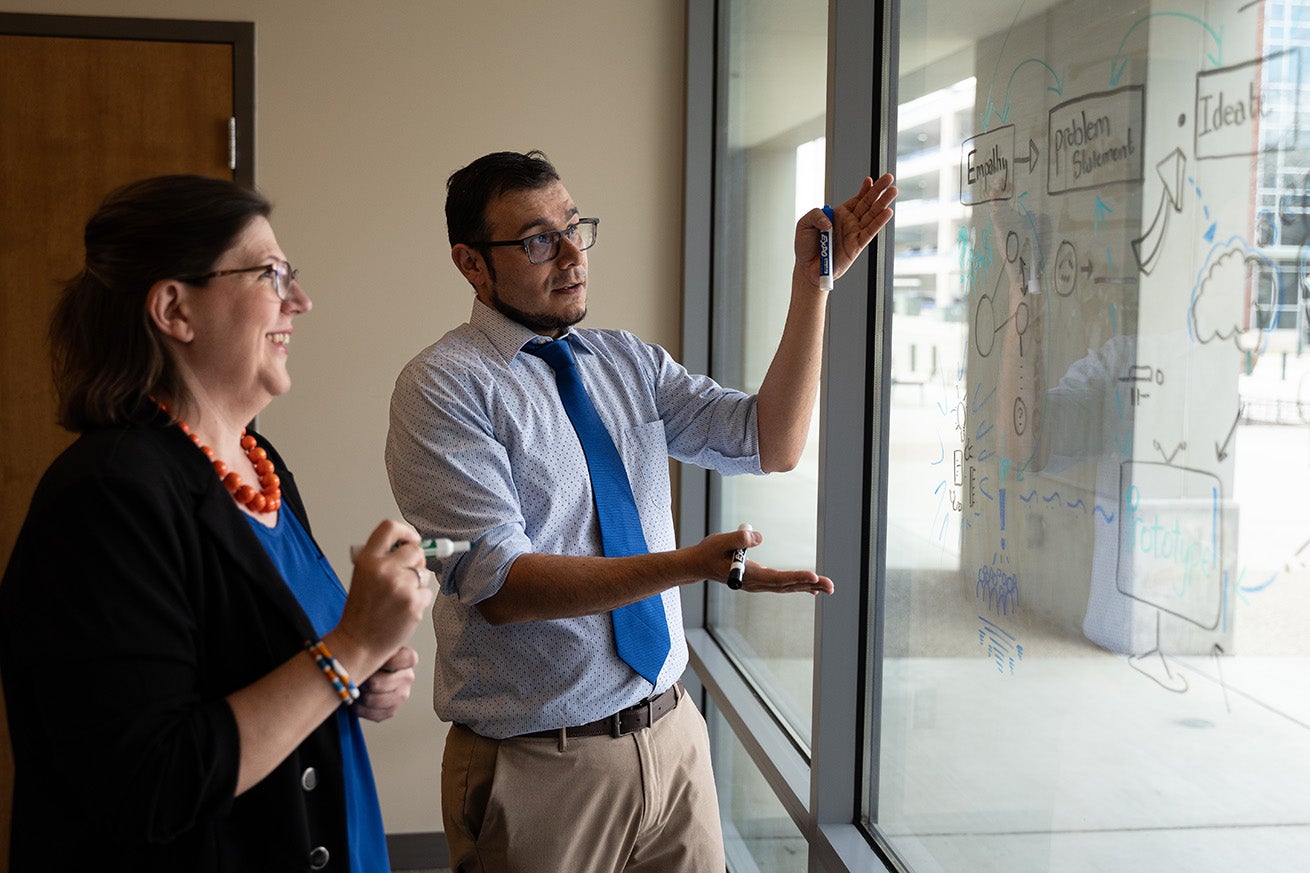
In students’ first semester, they learn to apply clinical judgment during assessments, identifying patients’ problems and determining how to care for them.
Each semester students learn different processes that relate to a core set of problem-solving skills, like evidence-based research practices that assess what solutions exist, or design thinking for creating new solutions, or quality improvement for solutions unique to an organization.
Llewellyn said the goal is to prepare students “for all these different kinds of processes that can happen in the nursing profession.”